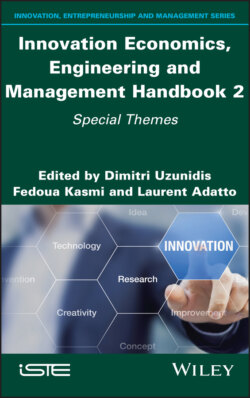Читать книгу Innovation Economics, Engineering and Management Handbook 2 - Группа авторов - Страница 22
2.3.1. First bias: there are no good or bad innovative ideas!
ОглавлениеInnovation is a building process. It begins with an intention to create something new because of dissatisfaction, awareness of potential improvements or by surprise/serendipity (i.e. by the involuntary observation of a phenomenon). This is particularly due to the inherent curiosity of every human being and his or her ability to deploy resources to improve living conditions. As De Brabandere (De Brabandere 2014) points out, being creative means taking a different look at an object or a situation, whereas being innovative means achieving the solution.
It is therefore essential to develop one’s ability to explore the ecosystem in which one develops, in particular by being able to understand and integrate the major challenges we face in a mode of exploration commonly known as “from glocal to local”.
As a result, the current trend of frugal innovation cannot be ignored today when it comes to designing an innovation that is accessible to a larger number of people and nor can we ignore the needs expressed or not expressed by users. The analysis of needs and requirements is one of the major tools in innovation engineering. This ability to better understand and identify the context of the innovation is a prerequisite to any innovation engineering process in order to contextualize the project to be developed.
At this stage, it is not a matter of selecting ideas. In fact, it is a mistake to do so because many experiences show that ideas perceived as very attractive at the end of a creativity session turn out to be, in the end, little or not at all accepted by users/consumers. This leads to the interest of integrating the potential users of the innovation upstream of the innovation process, which we will come back to later (second bias).
Engineering research in the field of ideation is now looking for ways to make the process more efficient. To do so, methods are more and more systematic and supported by computer-based tools that make them more robust, such as the association of the TRIZ method with AI, or the development of expert systems associated with ontologies to drive the entire creative process.
Innovation is also the result of confrontation. An idea must go through a phase of enrichment, particularly by confronting the expertise of people with whom a relationship of trust has been built. Managing a network of internal and external experts is a crucial aspect of engineering in the service of innovation. There can be no management of innovative projects without collaboration (third bias).
